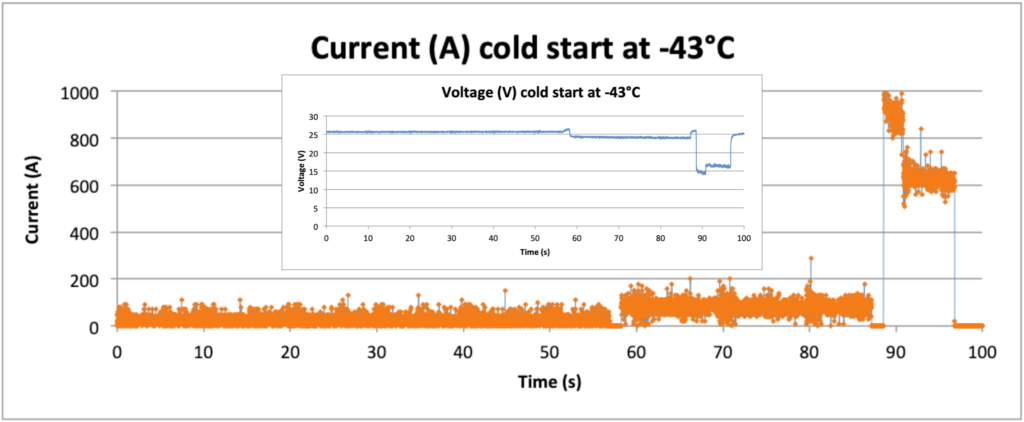Most of us have experienced frustration when having to start their car the first time it has been freezing during the night. The battery (a lead-acid accu) is dead. At very cold temperatures like -20°C even a new battery will not have enough energy left to crank an unwilling engine. The oil will be sticky and the fuel is cold. Note that even electric cars will have a hard time starting to move. At -20 °C Lithium-ion batteries have no energy left and they need to heat themselves during the night to avoid this situation.
But how do you crank an engine at -40 °C? This white paper explains it and shows test results using a 70 Ah power capacitor battery based on our 18650 cells. It turns out that it is not a battery problem but one of pre-heating the air and the fuel. And yes at -43°C, some self-heating of the battery is needed as well.

Read the white paper here:
starting_engines_extreme_cold_V3
The conclusions of these cold start tests?
The 18650 hybrid powercapacitor offers a decent energy density in conjunction with a high power capability and can be operated at very low temperatures. Configured in a battery pack it has enough energy available at -43°C to start a self-heating process and provide heating capability to warm up the inlet air and fuel of the heavy diesel engine. In principle, it can start the motor in less than 100 seconds while a complete heating up of the engine air and fuel for a safe engine start can take up to 30 minutes. At the moment only about 21.5 Ah (at 24V) will have been used with an additional cold start only requiring 2.75 Ah.

Recent Comments